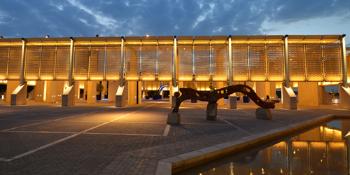Life & Death in Early Dilmun: Stories from the Dilmun Bioarchaeology Project
- Category
- Lecture
- Date
- 22 November 2017, 6:30pm
- Venue
- Bahrain National Museum –Auditorium
- Tickets
- Free Admission
Since 2008, the Dilmun Bioarchaeology Project has been studying and publishing the collections from Peter B. Cornwall’s 1940-41 expedition to Bahrain and Saudi Arabia, which now reside in the Phoebe A. Hearst Museum of Anthropology at UC Berkeley. Cornwall excavated at least 24 burial mounds in the northern and western parts of Bahrain Island, and conducted surface survey at several archaeological sites in the al-Hasa region of Saudi Arabia. He drew on thesematerials to argue that the Bronze Age polity of Dilmun had been located in that region. By documenting and analyzing the skeletal remains and artifacts collected by Cornwall, our team hopes to add to anthropologists’ understanding of how life was experienced and death commemorated in Dilmun. Preliminary findings have been published in academic and public-oriented peer-reviewed journals. We also mounted a touring museum exhibit entitled “From Death to Life in Ancient Bahrain” that features the facial reconstructions of two Early Dilmun people. Recently, we launched a new phase of the project in which AMS radiocarbon dating and stable isotope analysis are confirming the dates of the Bahraini burial mounds and shedding light on the residential mobility and dietary practices of the people buried in them. We look forward to sharing the results of our research with the audience at the Bahrain National Museum.
Alexis T. Boutin (Ph.D., University of Pennsylvania) is Associate Professor of Anthropology and Advisor in the Cultural Resources Management M.A. Program at Sonoma State University. Her bioarchaeological fieldwork and museum collections research focuses on ancient Near Eastern, Gulf, and eastern Mediterranean societies. Alexis’s publications use human skeletal remains, archaeological contexts, and ancient texts to tell stories about embodied personhood in all of its iterations. Her recent projects emphasize community collaboration and stakeholder-oriented interpretation and outreach.









